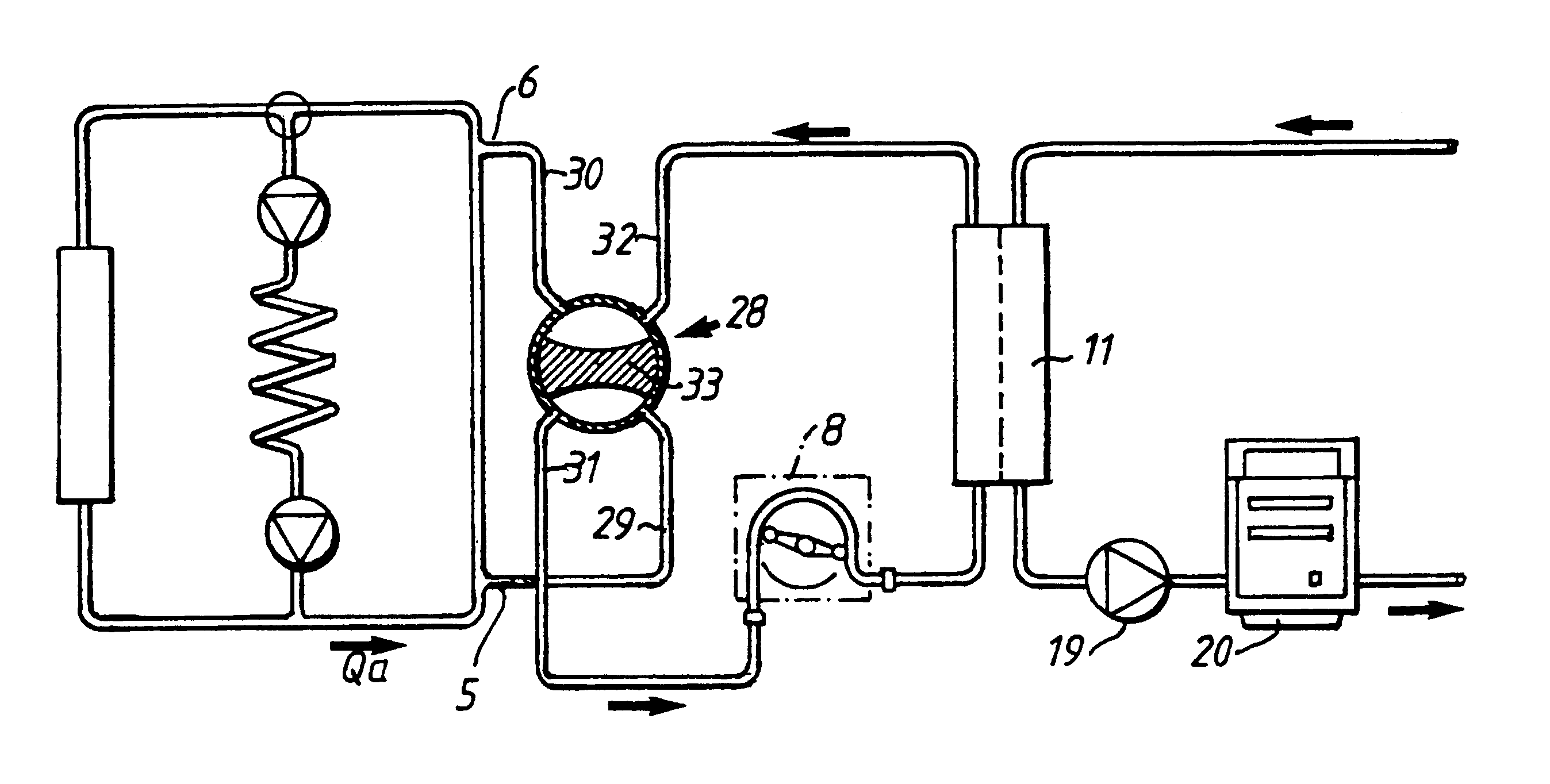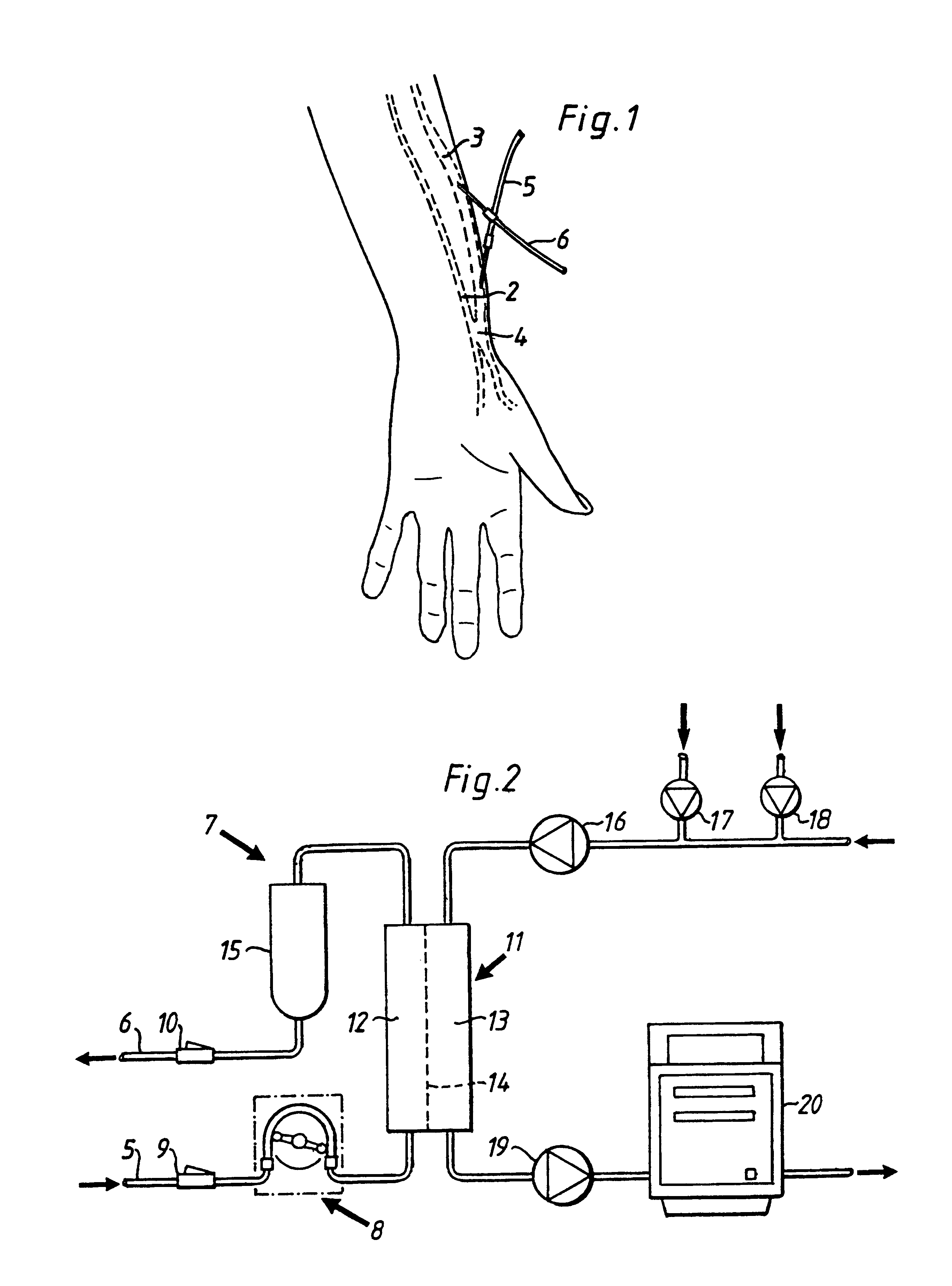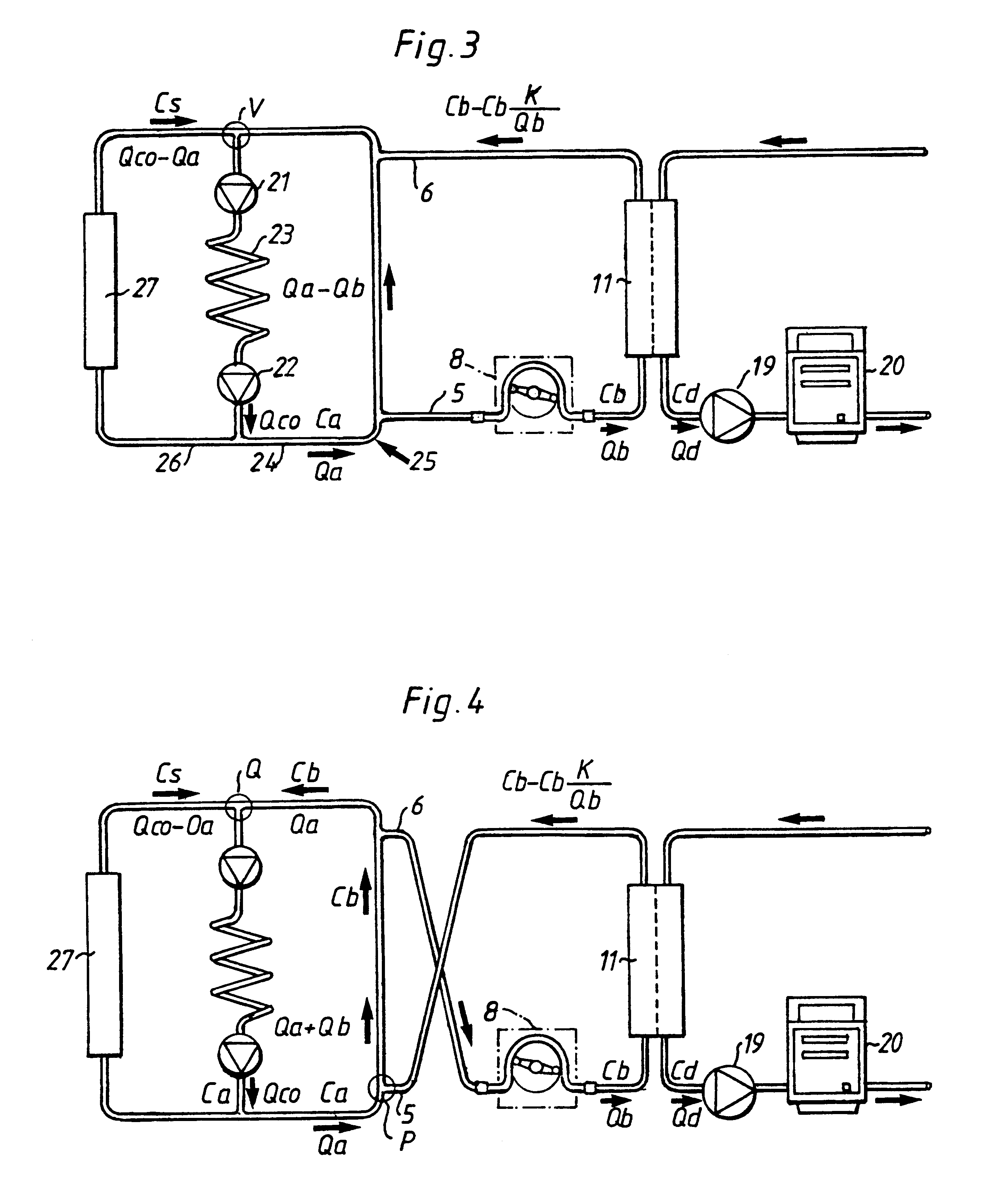Method and device for measuring access flow
a technology of access flow and flow rate, which is applied in the direction of relative volume flow measurement, separation process, instruments, etc., can solve the problems of poor flow of av fistula, partial obstruction of venous limb, poor treatment, etc., and achieve the effect of increasing the conductivity of dialysis fluid upstream of the dialyzer
- Summary
- Abstract
- Description
- Claims
- Application Information
AI Technical Summary
Benefits of technology
Problems solved by technology
Method used
Image
Examples
Embodiment Construction
For the purpose of this description, an access site is a site in which a fluid in a tube can be accessed and removed from and / or returned to the tube. The tube may be a blood vessel of a mammal, or any other tube in which a fluid is flowing. The access flow rate is the flow rate of the fluid in the tube or blood vessel immediately upstream of the access site or removal position.
FIG. 1 discloses a forearm 1 of a human patient. The forearm 1 comprises an artery 2, in this case the radial artery, and a vein 3, in this case the cephalic vein. Openings are surgically created in the artery 2 and the vein 3 and the openings are connected to form a fistula 4, in which the arterial blood flow is cross-circuited to the vein. Due to the fistula, the blood flow through the artery and vein is increased and the vein forms a thickened area downstream of the connecting openings. When the fistula has matured after a few months, the vein is thicker and may be punctured repeatedly. Normally, the thick...
PUM
 Login to View More
Login to View More Abstract
Description
Claims
Application Information
 Login to View More
Login to View More - R&D
- Intellectual Property
- Life Sciences
- Materials
- Tech Scout
- Unparalleled Data Quality
- Higher Quality Content
- 60% Fewer Hallucinations
Browse by: Latest US Patents, China's latest patents, Technical Efficacy Thesaurus, Application Domain, Technology Topic, Popular Technical Reports.
© 2025 PatSnap. All rights reserved.Legal|Privacy policy|Modern Slavery Act Transparency Statement|Sitemap|About US| Contact US: help@patsnap.com



